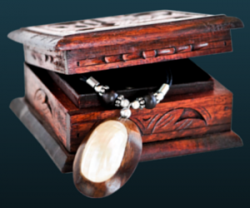Funeral Keepsakes
It can often be difficult to come to terms with the death of a loved one, especially if the deceased was particularly young or their death was unexpected. Although things like viewing the body or having an open casket can help with the process of saying goodbye, it can sometimes take more than that one final goodbye in order to truly let go.
Funeral keepsakes—ones that provide a physical reminder of the deceased—offer a way to link the past and the present, and to start moving through grief. This type of memento may not be for everyone, but if you’d like to have a more tangible memory, talk with your funeral director to learn more about the following options.
- Thumbprints, Handprints, Footprints: For infants and very small children, a keepsake handprint or footprint can be turned into artwork for the home. Because it’s a fairly standard practice to get these prints at your child’s birth, it makes sense to get one at their death, as well. Most funeral homes can make the impression for you, allowing you to keep the image for your own personal use. (For older children and adults, a thumbprint will often suffice. It’s small enough to put in a locket, which makes it ideal for memorial jewelry.)
- Cast Impressions: You can take the handprint idea one step further by having a cast impression made of a hand. Already a common practice for pets (many pet funeral homes will provide a paw print memento), this can also be done in the human world. Since it’s not quite as common, you may need to provide the materials and/or detailed instructions.
- Lock of Hair: It might not be as common a practice now as it was in the Victorian age, but there’s something beautiful about clipping a lock of hair and wearing it around your neck. Ask for a lock of the deceased’s hair for jewelry or simply to have on hand. Non-offensive and easy to care for, this is a quick and easy keepsake option.
- DNA Keepsakes: This is a fairly new part of the funeral planning process, but you can now use the deceased’s DNA to create a lasting memorial. Artwork or etched jewelry with the deceased’s unique DNA code, and even Genes in a Bottle are a possibility.
- Cremation Jewelry: The most common form of keepsake is to place some of the deceased’s cremated remains in a piece of jewelry designed so you can discreetly carry a part of your loved one wherever you go. These work well because the amount of ashes is so small that several family members can take part of the deceased home.
If you do decide to create a physical keepsake of the deceased, don’t expect everyone to understand right away. This kind of memento is deeply personal, so it’s up to you to decide what kind of memories you want to keep—and sooner rather than later. Most of these keepsakes need to be taken shortly after death occurs, and once the deceased is buried, you won’t have the option anymore.



